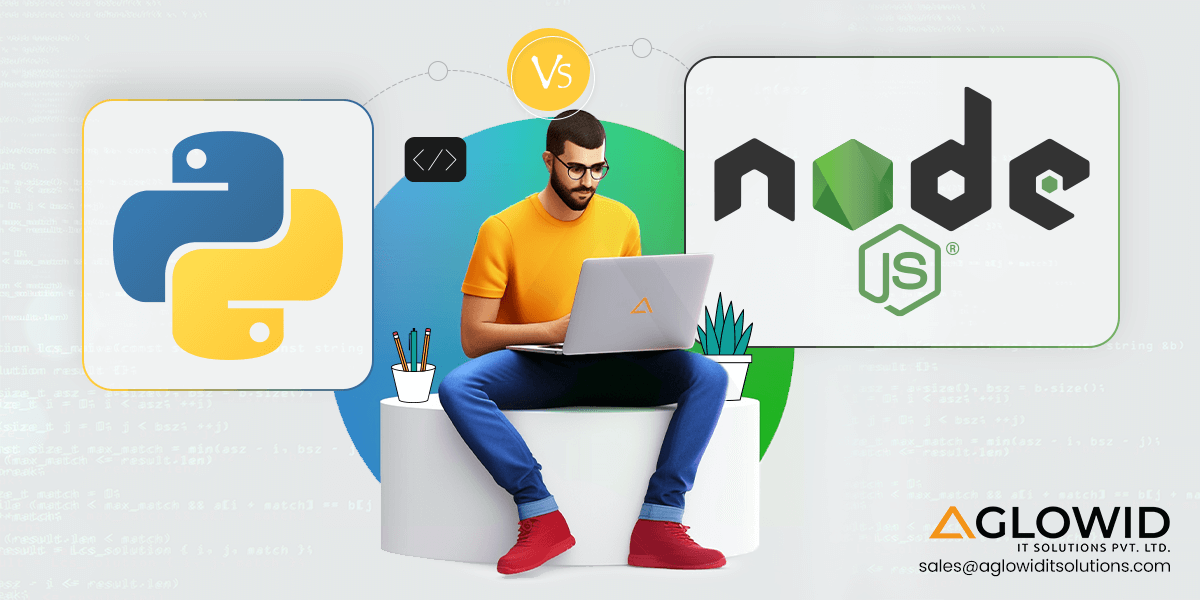Quick Summary:
Which backend technology is the best for your next project? Node.js & Python are two popular choices, each has their own multiple benefits & functionalities. This makes it difficult to choose between Python and Node. If you’re in the same dilemma you’re at the right place!
So, picture this: you’re in the active world of backend development, right at the crossroads where there are two titans, Node.js & Python and you must choose one. Both of these are flexible in their coding muscles. It’s like being in a candy store but having to pick between your top two favorites. Now, the developers know that this decision is no walk in the park.
Node.js with its lightning-fast mojo and real-time capabilities, is ready for the face off against Python, a wise & versatile master that has been around the corner forever. Choosing one might feel like picking a super-hero from the bunch.
But hey, fear not! We’ve got your back. This blog is your trusty sidekick guiding you through the perks, quirks and secret powers of Node.js and Python. We’re diving into the nitty-gritty advantages, features, and all other juicy details that make each of these Node js vs Python unique.
So, if you’ve ever been torn between speed demons and versatile wizards, you’re in for a treat. Stick around as we unravel the tech tapestry and help you find the coding companion that’s a perfect match for your project. Ready for the adventure? Let’s get this tech party started! 🚀
Node.js vs Python: An Overview
Node.js, centered on JavaScript, stands out for its runtime prowess, ideal for web applications and resource-efficient computing. It seamlessly handles both frontend and backend tasks with a unified stack. In contrast, Python finds its niche in intricate web projects, excelling in domains like big data, AI, automation, and backend development. Let’s see what Node.js is & what is Python.
What is Node.js?
Node.js is a cross-platform, open-source JavaScript runtime environment called allows JavaScript code to be executed outside of a browser. It is lightweight and efficient because it is based on the V8 JavaScript engine found in Chrome and uses an event-driven, non-blocking I/O architecture. Although it may also be used to create desktop and mobile applications, Node.js is mostly used to create server-side applications. Let’s look at the key features provided by Node.js:

Key Features of Node.js
Node.js is based on JavaScript owing to its asynchronous scripting, scalability, and quick execution. It’s flexible for developing web applications because of its unified frontend and backend languages and vibrant ecosystem. Some of the key features that Node.js offers are as follows:
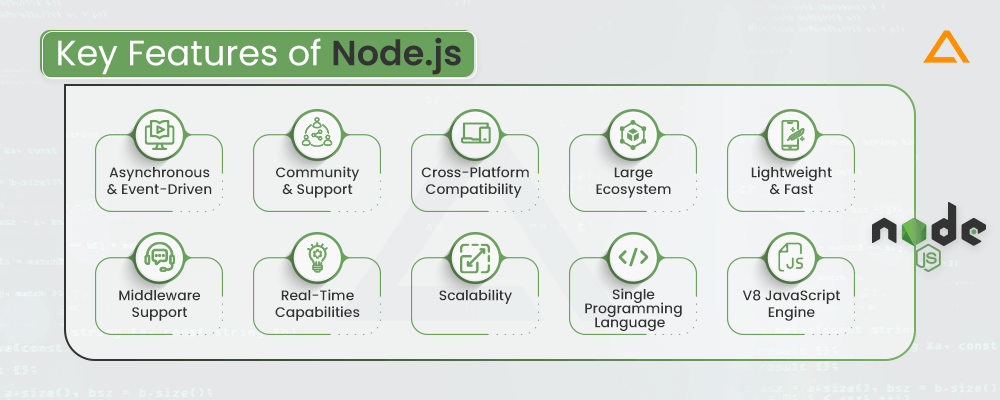
- Asynchronous and Event-Driven
- Community and Support
- Cross-Platform Compatibility
- Large Ecosystem (npm)
- Lightweight and Fast
- Middleware Support
- Real-Time Capabilities
- Scalability
- Single Programming Language (JavaScript)
- V8 JavaScript Engine
Statistics for Node.js
- According to the Stack overflow Developers survey of 2023, Node.js is the most popular web technologies used by 42.65%
- According to Statista, Node.js is popularly used web frameworks among developers worldwide, as of 2023
- As per W3Tech, Node.js is used by 3.1% of all the websites
Advantages & Disadvantages of Node.js
Node.js offers variety of advantages, however, as any other technology it also has variety of challenges. This tabular comparison sheds light on the benefits & limitations offered by Node.js.
| Advantages of Node.js | Disadvantages of Node.js |
| Asynchronous and non-blocking | Callback Hell (Nested and complex code structures) |
| Fast Execution | Not Suitable for CPU-Intensive Tasks |
| Single Language for Frontend and Backend | Relatively Young Ecosystem |
| Rich Ecosystem | Limited Standardization |
| Scalability | Learning Curve for Callbacks |
| Active Community | Limited multi-threading |
| Real-Time Capabilities | Inconsistent API |

What is Python?
Python is a sophisticated and multifaceted programming language with a focus on readability and ease of use. It allows for quick development across projects by supporting a large number of configuration models and having an extensive standards library.

Python, which is well-liked for its ease of use, has a sizable support community and is used in web development, data analysis, automation, artificial intelligence, and scientific computing. With the variety of features available it has become a prominent choice of developers. Let’s take a look at the features offered by Python:
Key Features of Python
Python is a flexible programming language, it stands out with its clear syntax, rich libraries and adaptability across the paradigms. Renowned for simplicity it finds broad application in web development, Python libraries for data science, artificial intelligence and automation, appealing to diverse range of developers.
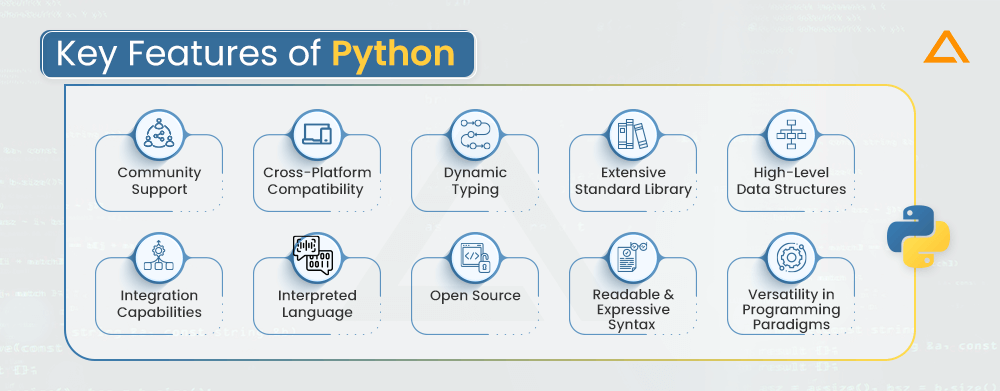
- Community Support
- Cross-Platform Compatibility
- Dynamic Typing
- Extensive Standard Library
- High-Level Data Structures
- Integration Capabilities
- Interpreted Language
- Open Source
- Readable and Expressive Syntax
- Versatility in Programming Paradigms
Statistics for Python
- According to Stack overflow Developers Survey 2023, Python has taken over SQL for third most commonly used language with 49.28%.
- According to TIOBE index, Python has grasped the first position with 13.97% of rating.
Advantages & Disadvantages of Python
Python, renowned for its readability and versatility, offers an extensive library ecosystem and strong community support. However, potential performance limitations in certain scenarios and constraints in mobile development present challenges that developers must consider for optimal decision-making in diverse applications.
| Advantages of Python | Disadvantages of Python |
| Readability and Clear Syntax | Performance Bottlenecks |
| Versatility in Programming Paradigms | Global Interpreter Lock (GIL) |
| Extensive Libraries | Limited Mobile Development Support |
| Strong Community Support | Indentation-Based Syntax |
| Ease of Learning | Not Ideal for CPU-Intensive Tasks |
| Interpreted Language | Limited Native Support for Mobile and Game Development |
| Cross-Platform Compatibility | Less Competitive in High-Performance Computing |

Now that you have an overview of Node.js vs Python. Let’s look at their comparison.
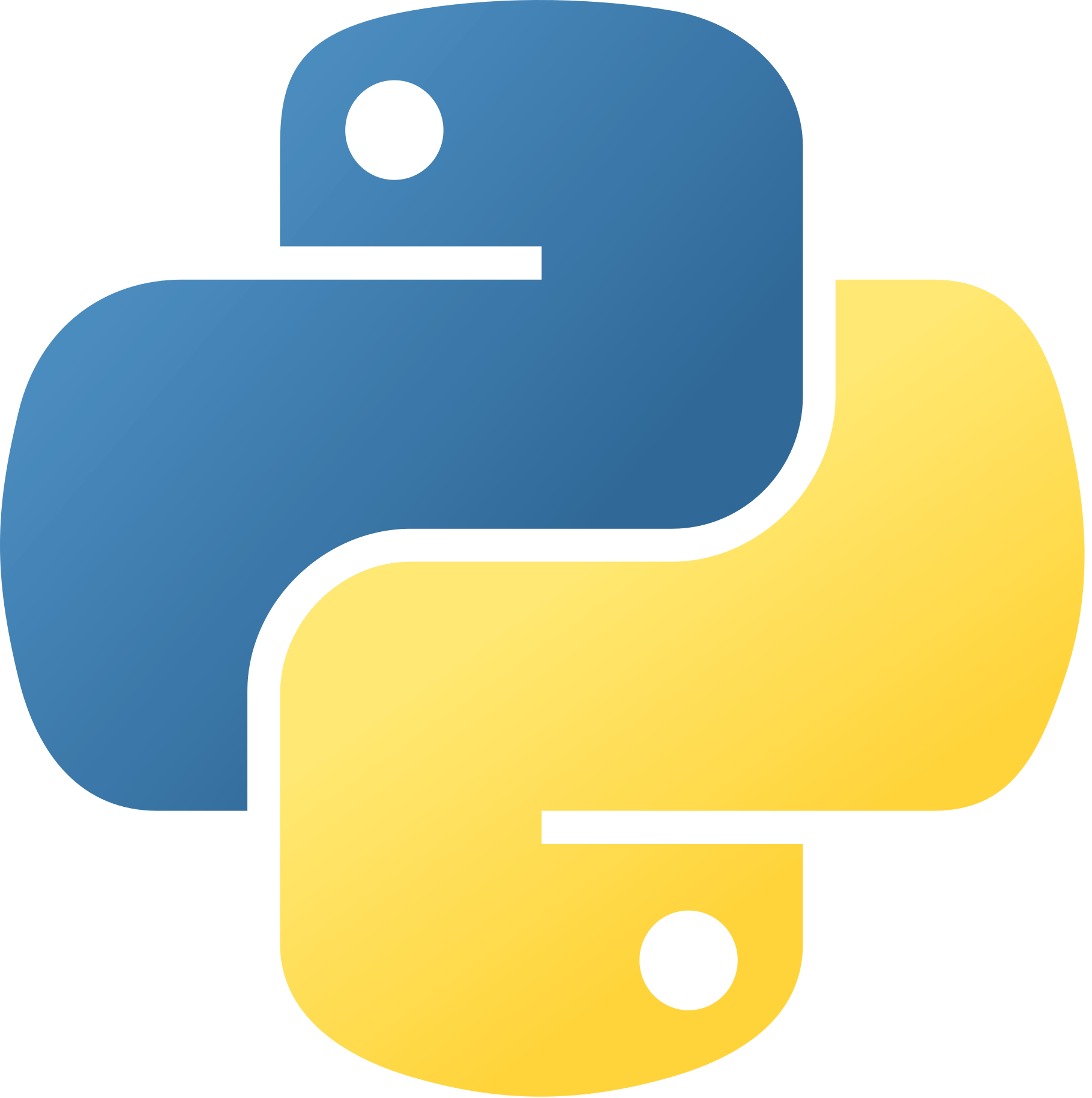
Hey!
Are you Looking to Hire Python Developer?
Hire a dedicated team from Aglowid for high-quality Python developers who are equipped with the latest Python skill-sets
Python vs Node.js: A Tabular Comparison
When contrasting Node.js with Python, the latter shines in real-time web application capabilities, speed, and asynchronous development, while the former is preferred for its rich libraries, readability, and versatility. Following Tabular comparison will shed light on the Node.js vs Python.
| Factor | Python | Node.js |
| Release | 1991 | 2009 |
| Popularity | Widely Popular | Rapidly Growing |
| Usage | Versatile (Web, Data, AI, etc.) | Primarily Backend for Web Apps |
| Architecture | Multi-paradigm | Event-Driven, Non-blocking I/O |
| Concurrency | Through Multi-threading (GIL) | Event Loop, Non-blocking I/O |
| Speed | Generally Slower (interpreted) | Fast Execution with V8 Engine |
Now gear up for the ultimate tech-showdown as Node.js and Python steps into the head-to-head battle. Its not just a comparison, it’s a clash. It’s a clash between the speedsters Node.js and the versatile Python. Let’s begin!
Node Js Vs Python: Head-to-Head Comparison
Let’s see the key factors that should be considered in the comparison between Python and Node.js.
Python Vs Node.js: Performance & Speed
Performance is the crucial factor when comparing Node.js vs Python. Python is well-known for its readability and adaptability, but because of the Global Interpreter Lock (GIL), which prevents real parallel execution, it has performance issues with CPUs. Although asyncio enhances performance on the input side, CPU side can still experience bottlenecks.
Node.js’s event-driven, non-blocking I/O architecture, coupled with its powerful V8 engine, make it an excellent choice for handling asynchronous operations. Because it is single-threaded, it is challenging for CPU-bound jobs, but it is perfect for applications with high concurrent demands.
Python vs Node.js: Architecture
Architectural considerations are important when selecting a backend development technology. Node.js is perfect for rapid development, especially for chatbots and online games, because it uses an event-driven architecture that permits asynchronous input and output. One reason for its remarkable speed is that it can process numerous requests at once without causing a block in threads.
However, Python is significantly slower because it runs synchronously. Perhaps this isn’t the greatest option for projects like chatbots. However, for parallel processes, Python can make use of the Asyncio package. You can use modules like CPython to make it event-driven, even though it isn’t by default.
Finally, because of its asynchronous, event-driven, and non-blocking architecture, Node.js stands out and is a great option for some applications.
Node Js Vs Python: Scalablity
Nodejs excels in the scalability for applications required high concurrency and responsiveness due to its event-driven, non-blocking I/O architecture. On the other hand, Python faces scalability challenges in CPU-bound tasks due to the Global Interpreter Lock, which limits true parallel execution.
Async programming helps IO-bound tasks, but CPU-bound operations may encounter bottlenecks. Overall, Node.js is preferred for high-concurrency scenarios, while Python’s scalability is task-dependent.
Python Vs Node.js: Extensibility
Extensibility, defined by the ability to add features through third-party tools is crucial when comparing Node.js and Python. In Node.js tools like Babel, Jasmine, Log.io, Webpack, and Express enhance frontend development, testing and project management.
Python users commonly employ Sublime text for code editing, Robot Framework for automated testing, and framework like Django & Web2Py for feature-rich applications. It is important to assess the extensibility through the third-party tools is essential when selecting between Python and Node.
Node Js Vs Python: Learning Curve
In terms of Learning Curve, Node.js being JavaScript-based is more accessible for those familiar with JavaScript. While certain aspects, such as event-driven architecture, may take time to grasp, mastering them enhances app performance. However, the low entry threshold in Node.js may lead to varying skill levels among developers.
While on the other hand, Python is considered easy to learn, especially for beginners with no prior JavaScript knowledge. Its clean syntax, readability, and indentation sensitivity makes Python more user-friendly and accessible. This all gives it an edge in terms of a beginner-friendly learning curve.
Python Vs Node.js: Tools & Libraries
Node.js and Python owe their popularity to the variety of extensive library support, streamlining development processes. In Node.js the Node Package Manager manages millions of packages, boasting the world’s largest ecosystem with over 1 million packages. Notable NPM packages include Express, Async, Moment, and Passport.
Meanwhile, Python relies on pip (Pip Installs Python) for managing libraries and packages, ensuring fast, reliable, and user-friendly installations. Prominent Python packages include Scikit-learn, NumPy, and Pandas. Both ecosystems contribute to increased development speed and efficiency.
Node Js Vs Python: Universality
It’s difficult to say which programming language—Python or Node.js—is “more universal” because universality refers to the variety of applications that a language supports. Because it is built on JavaScript, Node.js facilitates backend and frontend development, guaranteeing effectiveness and cross-platform capability. It looks for uses in cloud, mobile, online, and Internet of Things solutions.
Python is a adaptable language that can be used for both frontend and back-end programming. It is particularly well-suited for the Internet of Things and Natural Language Processing (ML and AI). Windows needs an interpreter, while Linux, Mac, and Windows come with Python already configured. When it comes to supporting a range of use cases, Python and Node.js are equally universal.
Python Vs Node.js: Error Handling
Error handling capabilities are integral to Node.js and Python, and are essential for effective problem solving. Although Node.js’s multitasking error handling features set it apart, Python’s simpler syntax makes debugging easier.
The logging modules in Python might be complicated for novices, making problem discovery difficult. The choice between Python and Node.js for error handling is based on developer preferences and project requirements.
Node Js vs Python: Community Support
Both Node.js and Python have large and active communities with substantial user bases. Node.js, a mature, open-source and globally appreciated ecosystem. Python, though slightly older, also thrives with an extensive community of contributors. Whether you are a business owner seeking to hire dedicated developers or a developer in need of support, both languages provide reliable and well-established communities.
Exploring the difference between Node js vs Python provides valuable insights into their unique capabilities. Both these technologies Node js and Python, have active community with stable popularity. As industry leaders choose between Python and Node, the robust community support ensures reliable foundations for innovations in software development.
Popular Application Developed with Python & Node.JS
Let’s see some of the popular names developed using Python and Node:
Best Applications Developed Using Python
Some of the well-known application developed using Python are as follows:
- Spotify
- BitTorrent
- Quantopian

Best Applications Developed Using Node.js
- Walmart
- eBay
- X
- Medium

Scenarios Where Python and Node.js Can be Used
The following are some of the popular scenarios where Node js and Python are used.
Top Python Use Cases
- Web & Software development
- Automated Testing
- Web Crawlers
- Optical Character Recognition & Image Processing
- Online Game Development
- AI/ML Application
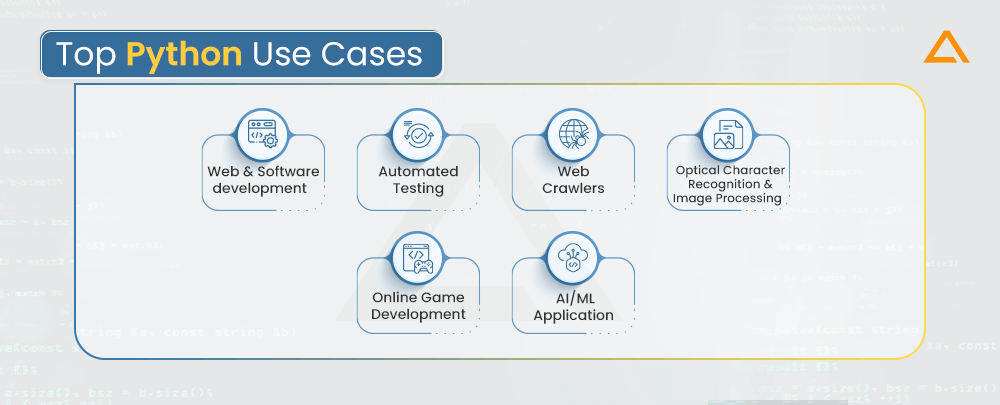
Top Node.js Use Cases
- Web Streaming Applications
- Single Page Application
- Real-Time Chat Application
- Real-Time Building Collaboration Tools
- E-commerce stores
- Content Management Systems
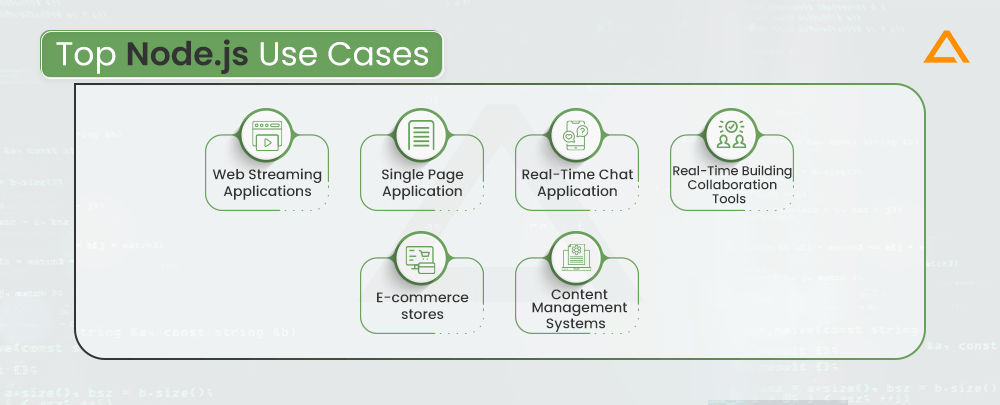
Node Js Vs Python: Which One to Use?
When deciding between Node js vs Python, its important to align your choice with unique requirements of your projects. Node.js renowned for its event-driven architecture, proven exceptionally effective in real-time applications and scalable systems.
On the other hand, Python celebrated for its simplicity & rich libraries, is an optimal choice for diverse applications, including data science and machine learning. Carefully assess the nature of your project and the expertise of your development team to make an informed decision customized to your specific needs.
